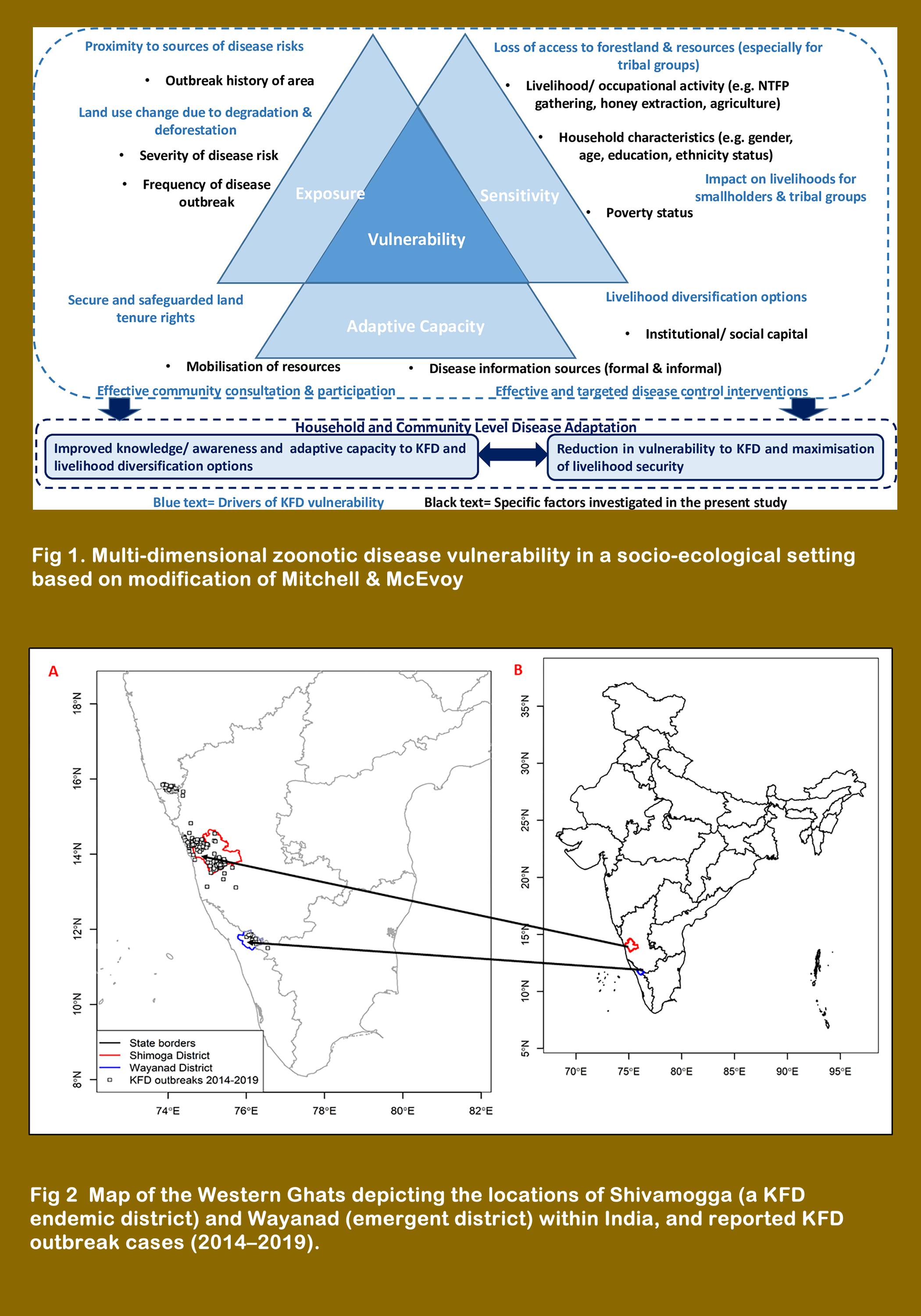Asaaga FA, Purse BV, Rahman M, Srinivas PN, Kalegowda SD, Seshadri T, et al.
8th February 2023
Asaaga FA, Purse BV, Rahman M, Srinivas PN, Kalegowda SD, Seshadri T, et al.
8th February 2023

THIS RESEARCH PAPER examines the vulnerability and adaptation pathways of poor and marginalised groups facing emerging zoonoses.
It focuses on Kyasanur Forest Disease (KFD), an often-fatal tickborne viral haemorrhagic fever endemic in south India, to examine how different socio-demographic and institutional factors interact to shape KFD vulnerability.
A survey was conducted with 229 households as well as key informant interviews to investigate these issues further.
Results showed that access to land, poverty level, age of household head were all significant determinants for perceived KFD vulnerability while proximity private hospitals, main roads also influenced vulnerability.
This paper highlights the need for context-specific and appropriate health interventions that can help enhance resilience among vulnerable social groups affected by Kyasanur Forest Disease (KFD).
These include awareness raising activities, knowledge networks, livelihood diversification etc. which are tailored to meet the needs of at-risk communities in this setting.
It also emphasizes on understanding underlying social vulnerabilities such as why some individuals get infected while others don't so that policymakers can develop control and adaptation interventions accordingly.
Furthermore, it suggests using panel data or participatory approaches like community risk mapping to better understand nuances around adaptation strategies employed by households facing KFD risks.
Asaaga FA, Purse BV, Rahman M, Srinivas PN, Kalegowda SD, Seshadri T, et al. (2023) The role of social vulnerability in improving interventions for neglected zoonotic diseases: The example of Kyasanur Forest Disease in India. PLOS Glob Public Health 3(2): e0000758
https://doi.org/10.1371/journal.pgph.0000758
Published: February 8, 2023